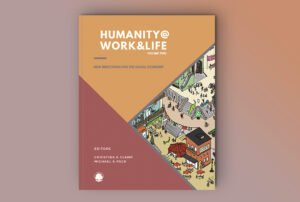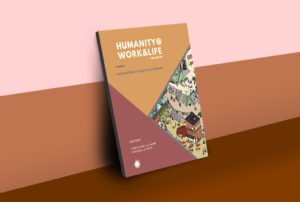
The idea for Letting Go, a book we recently published on impact investing and participatory grantmaking, came out of a conversation we had at a conference in 2019, one of the last we attended before the pandemic turned the world virtual. The conference was held in an immense former stock exchange in Europe; the main hall was filled with foundation leaders and venture capitalists who had paid upwards of $1,500 to mingle and learn about the latest trend in philanthropy, impact investing.
The funders saw suffering in the world, and they nobly aimed to heal it. The big ideas discussed—greenhouse gas reduction, microfinance, sustainable infrastructure—were certainly important. Yet the people in the room were mostly white, mostly male, and almost entirely from the United States and wealthy European cities. Several times during the conference, speakers (including, to their credit, the conference organizers) pointed out the lack of voices in the room from marginalized communities.
To put it bluntly, the funders mostly talked to each other, devising “solutions” to problems many of them had never experienced. The stock exchange setting, with its cavernous ceilings, completed the picture of an echo chamber of privilege.
Other People’s Problems
We work in a field often labeled the “social sector,” one in which foundations, impact investors, and nonprofits collectively aim to address the world’s thorniest problems.
This kind of work can be very appealing, especially to a certain kind of young person trying to figure out how to use privilege for good. Social critic Courtney Martin has called this the “reductive seduction of other people’s problems,” writing that “if you’re young, privileged, and interested in creating a life of meaning, of course you’d be attracted to solving problems that seem urgent and readily solvable.” She notes that “There is a whole ‘industry’ set up to nurture these desires and delusions … encompassed so fully in the patronizing, dangerously simple phrase ‘save the world.’”
But over the past few years, we, like many of our pedigreed peers, have become more critical of this industry, its power dynamics, and our own role in it. The social sector, like so many institutions, faces a moment of reckoning. Books like Edgar Villanueva’s Decolonizing Wealth and Winners Take All by Anand Giridharadas have punctured the air of righteousness around the architects of social change. Twenty years into philanthropy’s so-called golden age, the unchecked rise of global inequality raises questions about just how effective those trillions in largesse have been.
Within philanthropy, the field may be said to have reached a moment of self-reflection. At the 2019 Skoll Forum, normally a place for heady optimism about the state of innovation and social change, one plenary session asked, “Is Philanthropy Part of the Solution or the Problem?” The moderator began by asking the roughly 250 people in the audience if they agreed with the statement that “philanthropy is at a moment of reckoning.” Nearly everyone raised their hand.
Still, many of the big ideas for reform emanating from philanthropy over the past year— pledges to waive grant restrictions, or to “listen” to community members—have proven inadequate. At this moment, when so many nonprofit leaders are feeling disconnected from and disrespected by the institutions that fund them, and when massive inequality is creating a growing chasm of lived experience between people with money and people with ideas, shifting who makes decisions and how is vitally important.
Shifting Power
The term of art is “participatory grantmaking,” but what this really means is a shift in power so that participation is meaningful. The idea behind participatory grantmaking is both simple and powerful: What if we shifted decision-making power away from supposedly expert grantmakers and investors? What if people with lived experience had the power to devise and implement solutions to the problems they face?
Participatory grantmaking is a form of trust-based philanthropy that extends listening much further by directly engaging community members, including grantees, in the decision-making process around grants. In the past decade, it has grown rapidly—from newer activist-led foundations like the Disability Rights Fund and Young Feminist Fund, to the halls of some of the biggest foundations in the world, including Ford.
There are a small but growing number of mainstream funders experimenting with participatory grantmaking today. Ford Foundation and Open Society Foundations have both supported smaller participatory funds through regranting. The Nike Foundation and Global Fund for Children have signed onto donor collaboratives that cede control, like the With and For Girls Collective. And major foundations like MacArthur Foundation are experimenting with participatory pilots.
Sign up for our free newsletters
Subscribe to NPQ's newsletters to have our top stories delivered directly to your inbox.
By signing up, you agree to our privacy policy and terms of use, and to receive messages from NPQ and our partners.
We believe that foundations have a moral obligation to engage in participatory grantmaking. But they won’t necessarily do it on their own—because it’s unfamiliar, because it challenges their authority, and because it can be hard to form authentic connections with people who are not them.
For all these reasons, social movement and nonprofit leaders as educators, advocates, and community intermediaries have key roles to play in advancing the participatory grantmaking movement and pushing philanthropy to change:
1) Educate: In our interviews with foundation leaders and donors, a common theme emerges: Trust in philanthropy is eroding and philanthropists know it. Philanthropy is only effective if philanthropists find social movement and nonprofit partners. Many grantmakers recognize something must change, and this group appears to be increasingly open to alternative models for giving.
This means there’s a chance to educate funders on what alternative models might look like. There are many “how to” resources available, like Grantcraft’s fantastic guide Deciding Together, which the MacArthur Foundation cited as an inspiration for its participatory pilot. A broader resource is the Participatory Grantmaking Community, a community of practice for grantmakers interested in learning among peers regarding how to shift grantmaking power away from themselves and towards those most affected. Founded in March 2020 at the start of the pandemic, the group has grown to have over 300 members within philanthropy. There is, in short, a growing cultural shift within the field that can, if shoved from outside philanthropy, be amplified.
2) Advocate: A year ago, the Chronicle of Philanthropy published an op-ed encouraging grantmakers to loosen restrictions on funding. Diana Samarasan, founding executive director of the Disability Rights Fund, and philanthropic consultant Katy Love were unimpressed. They responded with a strongly worded letter to the editor challenging funders “to go further and ask, ‘Who is sitting at funder decision-making tables?’” This kind of constructive debate is critical and will need to be driven by grantees at conferences, on webinars, and across tables.
3) Connect: One major cost that can scare some funders away from participatory grantmaking is the time it takes to engage with community members. The process only works if the foundation can build authentic relationships with people who represent the communities they serve.
Here social movement and nonprofit leaders can also be highly influential. Some of the most successful recent participatory grantmaking models have been created in partnership with nonprofit intermediaries. The Disability Rights Fund partnered with the International Disability Alliance, an umbrella network of global and disability organizations, to nominate a diverse group of disabled activists to sit on its grantmaking committee and board. And the MacArthur Foundation worked with a community intermediary as it built an 11-person grantmaking panel for a participatory arts program in Chicago.
Mainstreaming Participatory Grantmaking
Will participatory grantmaking become the mainstream?
In his foreword to Letting Go, Edgar Villanueva envisions a world where at least 50 percent of the people who make funding decisions have direct lived experience. Getting to that point will be an uphill climb. There’s an urgency in how funders talk about participation that is often not matched by the urgency of their actions; there’s a danger that participatory grantmaking will be a passing fad, a buzzword, or remain siloed off—a nice add-on to what remains traditional, top-down philanthropy.
Perhaps most worrisome is the possibility that participatory grantmaking will be framed only as a tool to make philanthropy more effective—rather than as an ethos that demands philanthropists let go of power. A tool can be tested and then ignored, while an ethos is built into the very fabric of a grantmaking strategy.
Still, it is possible that at this moment, coming out of a paradigm-shifting pandemic, participatory grantmaking can catch a wave and fundamentally change philanthropy for the better. If so, then that top-down, closed-off model we all know—and by which most foundations operate today—might itself soon fade into obscurity.











